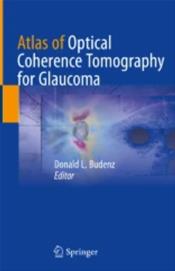|
|
|
|

|
| Available: 0 |
| List Price:$249.99 |
|
Other formats:
|
| Edition: | 1st |
| Publisher: | Springer Nature |
| ISBN: | 3-030-46791-0 (3030467910) |
| ISBN-13: | 978-3-030-46791-3 (9783030467913) |
| Format: | Atlas |
| Binding: | Hardcover |
| Copyright: | 2020 |
| Publish Date: | 07/20 |
| Weight: | 1.13 Lbs. |
| Pages: | 204 |
| Subject Class: | OPH (Ophthalmology) |
| Return Policy: | Returns accepted up to 12 months provided no other recalls or return restrictions apply. |
| Contributing Authors: |
View
|
| ProQuest Ebook Central: |
 Available in ProQuest Ebook Central™ View
Available in ProQuest Ebook Central™ View
|
|
|
| |
| Discipline: | Ophthalmology | | Subject Definition: | Glaucoma-Diagnostic Imaging; Tomography, Optical Coherence | | NLM Class: | WW 17 | | LC Class: | RE871 | | Abstract: | Optical Coherence Tomography has supplanted all other imaging technologies in the diagnosis and follow-up of glaucoma patients. It is the most commonly performed ancillary test in eye care, performed worldwide by optometrists and ophthalmologists. However, OCT manufacturers have done a poor (non-existent) job of teaching eye care providers how to interpret the results. Although many ophthalmologists lecture at national and international meetings and run workshops on OCT interpretation for glaucoma, there is not textbook or atlas that a practitioner can go to to learn how to interpret the images and printouts. Since eye care and imaging are both "visual arts", it seems rational to teach OCT interpretation using an atlas format rather than words, although a brief introduction to the topic and figure legends are needed. Practitioners love to learn using case examples so the figures will all be examples from the authors' practices.This book will be a case-based atlas intended to teach the reader how to interpret the results of OCT in glaucoma patients and glaucoma suspects. After a brief description of how OCT is used in particular situations, the remainder of the chapters will be actual case presentations from authors' practices with legends that describe the case and how OCT is used to make the diagnosis of glaucoma or glaucoma progression. In addition, emphasis will be placed on where OCT can lead the clinician astray by providing false positive or false negative results resulting in misdiagnosis. The intention of the format is to make it easily digestible in a weekend read and make the practitioner comfortable with OCT interpretation. Examples will be presented from all of the available OCT manufacturers.The book will start with a chapter describing the fundamentals of OCT, how it works, and specifically how it measures the structures that are important for the diagnosis and follow-up of glaucoma patients. It will then have 4 chapters on the specific parameters that OCT measures that are helpful in glaucoma diagnosis and follow-up (RNFL, optic disc, macular parameters, and anterior segment OCT) for the diagnosis and characterization of glaucoma. The next chapter will be devoted to the diagnosis of progression. The goal is to have examples from all 5 companies' instruments although it is unlikely that an individual author will have access to printouts from all 5. There will then be two authors for each chapter who will be able to contribute cases fr |
|
|
|
|
|
|
Follow Matthews Book Co. on:

Copyright © 2001-2025 Matthews Book Company - All rights reserved. - 11559 Rock Island Ct., Maryland Heights, MO, 63043 - (800) MED-BOOK
Matthews